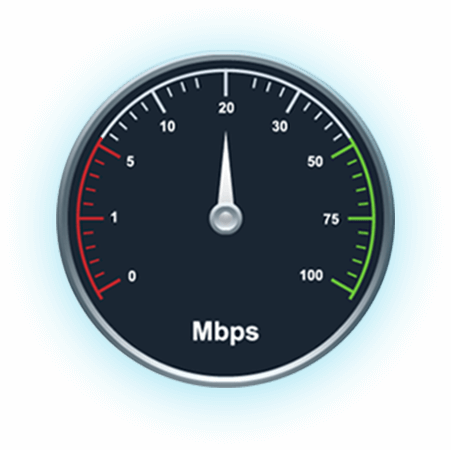Table of Contents
Speakeasy Internet Speed Test: A Look Back and the Best Alternatives Today
For many internet users of a certain era, the “Speakeasy Internet Speed Test” holds a nostalgic place. It was a simple, reliable tool used to check your internet speed and diagnose connection issues. But what happened to Speakeasy, and are there better alternatives available today? This comprehensive guide explores the legacy of the Speakeasy Internet Speed Test, delves into the reasons why it was so popular, provides an in-depth look at the best alternative speed test tools you can use to measure your internet speed and performance in 2024, and provides guides to troubleshooting.
Remembering the Speakeasy Internet Speed Test: A Blast from the Past

Speakeasy was one of the early popular internet speed test tools. It was known for its straightforward interface, ease of use, and relatively accurate results. For many users, it was the go-to tool for verifying their internet speeds and troubleshooting connectivity problems. What made it so popular?
- Simplicity:The interface was clean and uncluttered, making it easy to use even for non-technical users.
- Reliability:The test was generally considered to provide accurate and consistent results.
- Accessibility:It was a free and readily available tool, accessible from any web browser.
- No Frills:It focused solely on speed testing, without unnecessary features or advertisements.
What Happened to the Speakeasy Internet Speed Test?
While Speakeasy was once a household name, it eventually faded from prominence. While a definitive explanation is elusive, a number of factors likely contributed:
- Acquisition and Decline: It’s likely that Speakeasy was acquired by a larger company, and its focus shifted or the tool was simply neglected.
- Increased Competition: Numerous other speed test tools emerged, offering similar functionality and sometimes more advanced features.
- Lack of Updates: Without regular updates to keep pace with evolving internet technologies, Speakeasy may have become outdated and less accurate.
- Website Issues: The Speakeasy website may have become unavailable due to technical problems or a lack of maintenance.
Understanding Key Internet Speed Metrics

Before we dive into alternative speed test tools, it’s important to understand the key metrics they measure:
- Download Speed:The rate at which data is transferred from the internet to your device (measured in Mbps or Gbps). This is important for streaming videos, downloading files, and browsing the web.
- Upload Speed:The rate at which data is transferred from your device to the internet (measured in Mbps or Gbps). This is important for video conferencing, uploading files, and sending emails.
- Ping (Latency): The time it takes for a small data packet to travel from your device to a server and back (measured in milliseconds). Lower ping is better, as it indicates a more responsive connection, crucial for online gaming and real-time applications.
- Jitter: The variation in ping over time (measured in milliseconds). High jitter can cause intermittent lag and disruptions in online applications.
- Packet Loss: The percentage of data packets that are lost in transit between your device and a server. Packet loss can cause connectivity issues and data corruption.
Top Alternative Internet Speed Test Tools in 2024
Here are some of the best alternative internet speed test tools you can use in 2024, each with its own strengths and features:
- Ookla Speedtest: The industry standard for internet speed testing, offering a simple interface, accurate results, and a vast network of servers.
- Features:Download speed, upload speed, ping, jitter, server selection, historical results.
- Pros:Widely recognized, accurate, easy to use.
- Cons:Can be ad-supported, limited customization.
- Fast.com (Netflix): A minimalist speed test tool from Netflix designed to quickly estimate your download speed for streaming video.
- Features:Download speed only.
- Pros:Simple, fast, ad-free.
- Cons:Only measures download speed, lacks advanced features.
- Google Speed Test: Integrated directly into Google Search, this tool provides a quick and easy way to test your internet speed.
- Features:Download speed, upload speed, ping.
- Pros:Convenient, accessible, ad-free.
- Cons:Limited features, less accurate than dedicated speed test tools.
- TestMy.net: A highly customizable speed test tool with advanced features, including the ability to test different connection types and server locations.
- Features:Download speed, upload speed, latency, jitter, packet loss, custom test sizes, server selection.
- Pros:Highly customizable, accurate, detailed results.
- Cons:More complex interface, can be overwhelming for novice users.
- SpeedOf.Me: A HTML5-based speed test tool that doesn’t require Flash or Java. It adapts to your connection speed to provide accurate results.
- Features:Download speed, upload speed, latency, historical results.
- Pros:HTML5-based, accurate, clean interface.
- Cons:Limited features compared to some other tools.
- Xfinity Speed Test: Offers a quick and easy way to test your internet speed, with the added benefit of integrated troubleshooting tools for Xfinity internet subscribers.
- Features:Download speed, upload speed, latency, troubleshooting tools.
- Pros:Convenient for Xfinity customers, integrated troubleshooting.
- Cons:Primarily geared towards Xfinity subscribers.
Factors That Can Affect Your Internet Speed Test Results
Keep in mind that several factors can influence your internet speed test results:
- Time of Day: Internet speeds can fluctuate depending on the time of day due to network congestion.
- Number of Connected Devices: The number of devices using your internet connection simultaneously can impact your speed test results.
- Router Quality: An outdated or low-quality router can limit your internet speeds.
- Wi-Fi vs. Ethernet: A wired Ethernet connection will typically provide faster and more stable speeds than a wireless Wi-Fi connection.
- Server Location: The distance between your device and the speed test server can affect latency and download speeds.
- Your Hardware limitations: What your devices can and can’t handle
Troubleshooting Steps for Slow Internet Speed
What can be done to resolve any problems.
- Restart Your Modem and Router: This is often the first and simplest troubleshooting step.
- Check Your Router Firmware: Ensure your router has the latest firmware updates installed.
- Scan for Malware: Run a full system scan with your antivirus software to check for malware that might be consuming bandwidth.
- Check Your Ethernet Cables: Ensure your Ethernet cables are properly connected and not damaged.
- Optimize Your Wi-Fi Signal:
- Move your router to a central location.
- Keep your router away from walls and metal objects.
- Change your Wi-Fi channel to avoid interference from other networks.
- Upgrade Your Router: If your router is old or outdated, consider upgrading to a newer model with better performance and features.
Is Your ISP Throttling Your Bandwidth?
Bandwidth throttling is when your ISP intentionally slows down your internet speed. Here’s how to identify it:
- Consistent Slow Speeds: If you consistently experience slow speeds, especially during peak hours, your ISP might be throttling your bandwidth.
- Speed Tests at Different Times: Perform speed tests at different times of the day and compare the results. If you see a significant drop in speed during peak hours, throttling might be the cause.
- Check Your ISP’s Terms of Service: Review your ISP’s terms of service to see if they mention bandwidth throttling policies.
- Use a VPN: A VPN can sometimes bypass bandwidth throttling, but this is not always the case.
Mesh Wi-Fi Systems: Expanding Your Coverage
- Mesh Wi-Fi Systems: A series of connected devices to send the signal.
- How to optimize a mesh system.
Using Command-Line Tools for Network Diagnosis
Command-line tools can be used to check.
- Ping command
- Tracerout command
Wi-Fi Security
Look at the security setting
- WPA3: The strongest encryption protocol, offering robust security against unauthorized access.
- WPA2: A widely used encryption protocol that provides good security when properly configured.
- WEP: An outdated and insecure encryption protocol that should be avoided.
By doing this it provides security.



